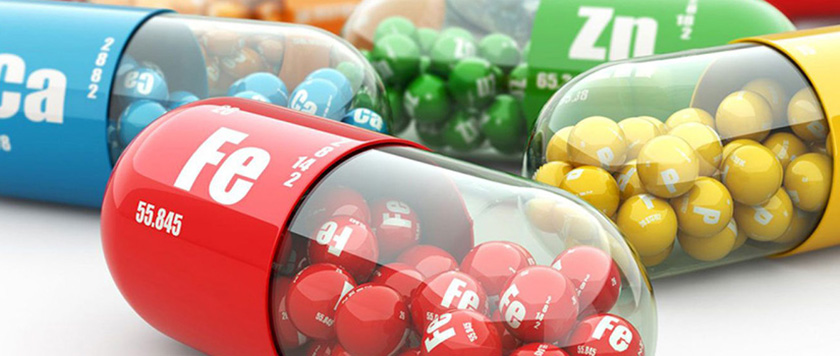Target audience
What is the starting point of any business? It’s the client. Do you know already who will need your services? Let’s find out!
Target audience is a group of users at whom certain marketing approaches are directed, who are the subject of interest for advertisers and/or who are interested about particular information.
Target audience (TA) are the people who satisfy the need solved by your laser tag club.
Types of TA
In contemporary marketing, the following types of TA can be singled out:
1. Primary and secondary.
Main target audience
Main or primary target audience is given priority to in brand marketing. It denotes a group of people that make a direct decision as to whether it is necessary to purchase a product or service. The primary target audience is the initiator of a purchase.
Secondary target audience
Indirect or secondary target audience has a passive role. Even if they take part in the process of a purchase they do not point out the need to buy a particular product or service. Secondary target audience are less important in brand marketing.
For you to be able to see a clear distinction between the two types of target audience, here is an example of the market of children’s toys and games. There are two types of target audience on this market: parents (the ones that buy a product or service) and kids (who use the product/service). Children do not buy a toy themselves, yet they often initiate the purchase – they ask their parents to make the purchase. Therefore, children are the primary target audience on children’s toys market, while parents are the secondary target audience.
2. Wide and narrow TA. Here, the name speaks for itself. For example: tea lovers belong to wide TA, lovers of fruit white tea belong to the narrow one.
3. Audience from the type of target group.

TA in business area (B2B) and in individual consumption area (B2C)
Besides, TA can be singled out according to the aim of visiting a website or a group in vk:
• TA that is interested in the content of the website (visitors come for information),
• Visitors interested in purchasing products and services at the website.
Where to search? Trying to find information
You can do the following to get information about the TA:
• questionnaires;
• taking interviews;
• opinion polls.
Aim to interrogate the largest possible number of respondents or do an opinion poll among the most active respondents.
Search for information in forums, blogs, social networks (in groups or on public pages) devoted to similar subjects.
Remember that there is ’clamorous minority’ at forums and in blogs. Their opinions must be collected and thoroughly analyzed: they shape the image of a product. Yet you must bear in mind that the claims made by that ’clamorous minority’ may not coincide with the opinion of the ‘silent majority’ who buy your services.

The portrait of a client: what you can gain from it
On the basis of a client’s portrait you can:
1. Make up a marketing campaign that best fits the requirements of a particular target audience (ads, commercial offers, content, etc.).
2. Formulate a well rounded offer: learn what problem your client has and promise to solve it.
3. Make a list of consumer benefits, compile a USP.
4. Learn about the triggers for influencing and motivating a client.
5. Find the main promotion channels in the internet, for instance, by means of the Affinity index.
IMPORTANT! The more detailed the portrait and the more characteristics you consider when creating it, the higher is your chance to shape an offer that answers the requirements of your target audience.
Use the 5W to segment your target market
1. What characteristics does your product or service possess?
2. Who is your potential client?
3. Why does a consumer need your product or service?
4. When will the purchase be made?
5. Where are you trying to sell your product/service?
You must come up with portraits of real clients and find out about particular types of behaviour they display when buying services or products.
The data about the TA that you collect will allow you to pick the right promotion strategy. Let’s view the basic segmentation parameters in more detail.
Characteristics for target audience description
Determining the target audience may depend on the following parameters:
• Geographic,
• Demographic,
• Socioeconomic,
• Psychographic,
• Behaviour patterns.

Geolocation
Information about location allows us to show the product only to those who live at that particular area. Besides, geolocation allows us to make assumptions about clients’ needs.
Demographic characteristics
Needs and preferences, as well as how frequently a product will be used are usually closely connected with demographic characteristics.
Unlike other segmentation criteria, demographic characteristics can be easily measured.
Variables: age, sex, nationality, parental and marital status.
Besides, while performing market segmentation by demographic characteristics one must consider a person’s work sphere.
Socioeconomic characteristics:
The following consumer’s characteristics are taken into consideration: his occupation, education, source and level of income which shapes the basis of purchasing power.
Sex differences, age and consumers' possibilities influence the type of goods and services they buy.
Therefore, very often we see drug advertising for pensioners, while car ads are intended for people aged 35 – 49. The most prestigious products and services are eminently favoured by entrepreneurs and managers.
Nevertheless, consumer activities depend on psychological traits, which must also be considered when creating a consumer portrait.
Psychographic segmentation
This is a real Klondyke for studying TA: lifestyle (a stay-at-home or a daredevil searching for adventures), values, life principles, how fast one makes decisions, whether a person has an idol he tries to copy, fears, problems and dreams.
Once you know about a person’s inclination to change, or the opposite, that he is quite conservative, you can make the text of your advertisement attractive for a particular group of consumers.
It is very important to get a grasp of the peculiarities of product or service promotion in fan societies.
We frequently make purchases when we are moved emotionally, influenced by positive emotions, such as tenderness, nostalgy, joy of recognition. Find out what your clients dream about or what they miss.

Behaviour patterns
Behavioural market segmentation involves selecting the parameters that can describe the moment of choice, purchase and product use.
Here are some of them:
• What is the driving force behind a purchasing act: the level of service, proof of status, chance to save, price, service rate, etc.;
• What is the incentive to buy the product/ use the service: is it for general daily needs or for a special occasion;
• The character of a client’s expectations about purchasing a product or a service;
• How fast a problem must be solved – the level of involvement into the purchase.
• The point about attitude towards a brand can be included in this list – a client’s attitude to the product: loyal, hostile, indifferent, et al:
1. Devoted users: they know about the brand, buy this brand, they are absolutely loyal to the brand and do not defect for competitors;
2. Loyal users: know the brand, buy it, but sometimes they buy other product brands;
3. Slightly interested: know the brand, but do not buy it;
4. Not interested: do not use, do not know.
Another marker is how frequently a product/ service is bought, that is, the level of intensity of product use (frequency, experience using it, adaptation to the product).
Take aim and fire: working with TA

Creating USP
After you have shaped the portrait of target groups, do devote some time and efforts to creating a separate ad, banners or landing pages for each target group. Compose a unique selling proposition for them. That’ll be right on the button.
If you create a USP for a narrow segment of TA, the targeted action will be more powerful!
Affinity Index
The affinity index determines just how suitable a particular marketing channel is for the required target audience. It significantly influences the effectiveness of a marketing campaign and the cost of contact with the target audience.
By comparing the affinity index with other markers – visits, cancellations, conversion -– you can determine the preferences of the visitors that can be the easiest to convert.
TA and promotion channels:
SEO
Target audience – search engines. Searching for key words and phrases, sorting a website out so that it corresponds to the requirements of search engines.
If a TA has been incorrectly determined, this will lead to mistakes during the process of search engine optimization.
Content-marketing
The topics that shape your content must be interesting for the TA and you must ensure that you have expert knowledge in these areas.
Successful strategy does not necessarily imply virus laden content. You simply need to be consistent and sincere with your clients.

The influence of stereotypes on TA
Our brain painstakingly generalizes the information about the world around us. Therefore, stereotypes are automatically shaped in our perception. They affect both our consciousness and the subconscious.
You must consider this when working on the portraits of target groups and when creating marketing identities.
The following stereotypes are most common:
• gender (women are more emotional than men);
• age (the elderly are decrepit and have many illnesses, the young are active);
• nationality (the citizens of former Soviet republics are unqualified workers, the English are prim and proper, Germans are punctual);
• professional (How come? But aren’t you a programmer? etc.);
• class-consciousness (a professor is certainly well behaved, a factory worker is impolite);
• appearance (pursed lips — angry person, a person who wears glasses — intelligent, pretty – nice, and so on).
It is appropriate to mention current stereotypes that might increase trust in the website/ blog/ group. Consider these:
1. Thought out design, convenient usability;
2. The ability to provide an expert opinion and have partners among famous brands;
3. Corporate ethics and quality Western business management technologies;
4. The organizations that provide the latest news are more appealing than those spreading outdated information.

The list of useful programs and services
Automatic data collection applications will help you study your target audience quickly and effortlessly. Some of them are free.
Surveymonkey.com – you can try it for free. Convenient functions.
Simpoll.ru is for Russian language speakers.
Qualaroo.com – a popular Western service with a variety of useful functions. Among them – Advanced Targeting.
Google Forms – user-friendly and free.
Google Analytics no comments.
Google Trends – an instrument for determining the mood of the target audience: what key words are used to find your product, how often the interest to your product/service shifted as well as the number of requests and the regions from which these requests came.
Use sensibly.


